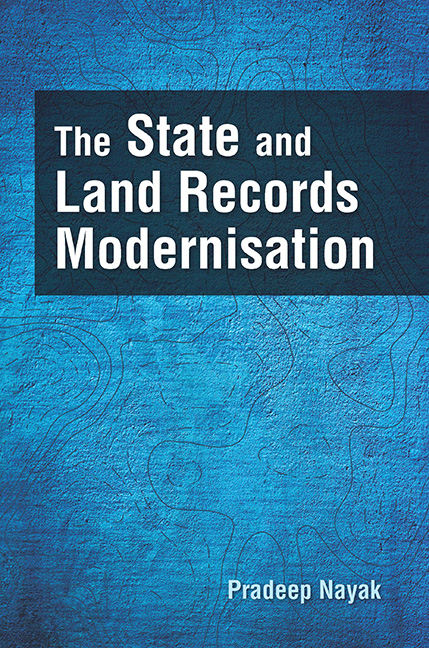Book contents
- Frontmatter
- Dedication
- Contents
- List of Figures and Tables
- Foreword
- Preface
- List of Abbreviations
- 1 The State, ICTs and Governance: A Theoretical Exploration
- 2 E-Governance in Public Policy Discourse in India
- 3 The State and the Policy of Land Records Management
- 4 The Computerisation of Land Records Programme in Odisha
- 5 The Computerisation of Land Records Programme in Karnataka
- 6 The Computerisation of Land Records Programmes in Karnataka and Odisha: A Comparative Study
- Conclusion: Beyond Techno-Managerial Governance
- Select Bibliography
- Index
5 - The Computerisation of Land Records Programme in Karnataka
Published online by Cambridge University Press: 02 December 2022
- Frontmatter
- Dedication
- Contents
- List of Figures and Tables
- Foreword
- Preface
- List of Abbreviations
- 1 The State, ICTs and Governance: A Theoretical Exploration
- 2 E-Governance in Public Policy Discourse in India
- 3 The State and the Policy of Land Records Management
- 4 The Computerisation of Land Records Programme in Odisha
- 5 The Computerisation of Land Records Programme in Karnataka
- 6 The Computerisation of Land Records Programmes in Karnataka and Odisha: A Comparative Study
- Conclusion: Beyond Techno-Managerial Governance
- Select Bibliography
- Index
Summary
Introduction
The state of Karnataka's revenue administration comprises 29 districts, 176 sub-divisions, 203 taluks, 27,481 revenue villages and nearly 9000 village accountants’ offices. The state has inherited a varied and diverse set of regional land revenue systems and tenures owing to the amalgamation of the state of Coorg and regions from the erstwhile states of Mysore and Hyderabad, and the Madras and Bombay Presidencies. According to the Karnataka Development Report (2007) the state has in recent years adopted a number of reform measures for ‘improving’ governance such as the privatisation of government activities by disinvestment, adoption of Public Private Partnership (PPP) model and downsising the bureaucracy to improve ‘operational efficiency and productivity in administration.’ Successive governments in Karnataka have actively pursued a policy of increasing the use of ICTs for empowering citizens with information and speedy delivery of services. The elements of policy environments that triggered a series of reforms are competitive politics, pressure of globalisation, influence of ICTs, pressure of World Bank and macro-economic reforms initiated by the Government of India. In this chapter, we carry forward the analysis of computerisation of land records programme in Karnataka with special reference to the Bhoomi programme. It has been aptly described by James Manor as one of the successful governance reforms in Karnataka. Here we provide an outline on implementation of Computerisation of Land Records (CLR) and Strengthening Revenue Administration and Updating Land Records (SRA&ULR) programmes in Karnataka, and launching of Bhoomi project, the reasons for the success of Bhoomi programme, its impact on public, revenue officials, and taluk offices and the critical appraisal of the programme that has been projected as an ideal model by the central government and World Bank.
Apart from extensive consultation of the relevant secondary literature, we undertook field studies from May 2009 to January 2011. I visited 17 taluks both on southern and northern Karnataka and interviewed village accountants, tahsildars, deputy tahsildars, assistant commissioners, officials at the revenue department and Bhoomi monitoring cell in Bengaluru, survey and settlement offices and the officials of NIC both at the district and state levels.
- Type
- Chapter
- Information
- The State and Land Records Modernisation , pp. 193 - 258Publisher: Foundation BooksPrint publication year: 2015

